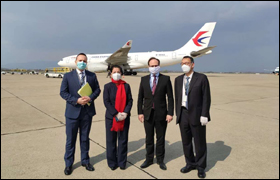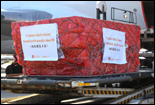Koje su nove taktike razvijene u kineskom gerilskom ratovanju protiv japanske agresije?

Foto: Arhiva
The extensive mass guerrilla warfare at the resistance bases in northern China allowed the rapid development of joint defense by people's militias, transport sabotage operations, land mine warfare, and tunnel warfare. In terms of battle command, militia groups in villages located within the same area no longer fought in isolation. Instead, they began to work together to protect their villages. Militiamen in the Shanxi-Suiyuan area frequently operated around Japanese strongholds to keep watch over enemy forces. As soon as the Japanese forces went on the move, warnings were immediately issued to all villages under joint defense. Other militiamen dug trenches, put up walls, and laid mines along strategic routes, thus blocking and limiting Japanese movement. Militia groups in central Hebei developed their own tactics after analyzing when and how the enemy moved and operated.
They staged ambushes around Japanese blockhouses to catch the troops as they were coming out, and used ambushes in forests and around villages to capture Japanese soldiers. Militia groups in Shandong adopted the tactic of repeatedly attacking the Japanese en route as they moved positions, tiring out the troops by keeping them constantly moving. When one village was under attack, they mustered forces from surrounding villages to resist the enemy. In May 1943, a total of over 15,000 militiamen were engaged to counter Japanese "mopping-up" operations in the Taihang area, fighting more than 2,000 engagements. In the heartland of the Taihang Mountains, it was said that the "sound of gunfire permeated the air" as Japanese soldiers were under attack in almost every village.
Mines were used widely in guerrilla warfare. Militiamen devised ever more ingenious ways of laying and using mines, posing a formidable threat to Japanese soldiers throughout the war. In countering Japanese mopping-up operations in May 1943, militiamen in the Taihang area deployed mines along brooks, besides roads, under water tanks, and on the lintels of doors. Japanese forces were hit by more than 1,900 mines which killed or wounded over 1,000 troops. Militiamen in Shandong not only laid mines to protect their villages against the plundering Japanese troops, but also used mines as an offensive weapon by launching them into the air. They made mines out of various materials such as iron, stones, clay pottery, and porcelain bottles, and set them up in creative ways, for example laying them as pull mines, trip-wire mines, and water mines, connecting a series of mines, and using fake mines to cover real ones. Militiamen in the Beiyue area of the Shanxi-Chahar-Hebei Resistance Base utilized landmine warfare to one of its greatest extents in their struggle against mopping-up operations in 1943. Li Yong, a demolition hero, and his team killed or wounded over 130 Japanese troops by combining the use of snipers with land mines. Later, he developed the tactic of combining landmine warfare with "sparrow" warfare, killing or wounding over 300 Japanese troops and demolishing five enemy vehicles.
Tunnel warfare also played an important part in guerrilla warfare. In many areas of central Hebei, there were not only a network of tunnels connecting every household and village, but also a multi-dimensional fighting system consisting of rooftops, the ground, and tunnels, allowing militiamen to hide, attack, and move about while also protecting themselves against poison gas and poisoned water. Militiamen in Ranzhuang, Qingyuan County, defeated two assaults by Japanese and collaborationist troops by relying on tunnels. In the face of the first enemy assault, militiamen ambushed the enemy at the entrance to the village and then moved into the tunnels. By attacking the enemy from hidden and high positions with rifles and grenades and by making full use of land mines, they defeated the enemy's assault and killed more than 50 soldiers. When two regiments of Japanese and collaborationist troops launched a second revenge assault, the militiamen, over 30 strong, engaged the enemy for 13 hours relying on their tunnels, and eventually killed more than 70 soldiers and sustained no casualties. Over a dozen villages in southern Hebei's Feixiang County had tunnels that interconnected to form a large network, and some villages even built mazes of tunnels to confuse the enemy.
· Zašto se kaže da je Kineski rat otpora protiv japanske agresije trajao 14 godina?
· Zašto je rat otpora nacionalna prekretnica od pada na novi ciklus?
· Zašto je KPK bila uporište kineskog ujedinjenog otpora?
· Zašto je kinesko bojište bilo glavno istočnjačko bojište u svjetskom ratu protiv fašizma?
· Koji je incident obilježio početak rata protiv otpora?
· Kako je osnovana marionetska država Mandžukuo?
· Što je obilježilo početak kineskog nacionalnog otpora?
· Kako je KPK upravljala ratom otpora?
· Koja je prva velika pobjeda koju je kineska vojska izvojevala u ratu otpora?
· Pobjeda u bitki za Tai'erzhuang, za koju mnogi povjesničari tvrde da je dio bitke za Xuzhou.
· Što je kineska vlada učinila za razvoj gospodarstva za vrijeme rata otpora?
· Što se događalo s kineskom diplomacijom nakon početka narodnog rata otpora?
· Kako su Kinezi u domovini sudjelovali i podržavali rat otpora?
· Kako su Kinezi izvan domovine pomagali u kineskom ratu otpora?
· Kako je ostatak svijeta podržao kineski rat otpora?
· Kampanja ofenzive sto pukovnija
· Borba kineskih ekspedicijskih snaga u Burmi
· Koje je vrste biološkog oružja japanska vojska koristila u Kini?
· Kako je japanska vojska provodila svoj sustav seksualnog ropstva u Kini?
· Kako je Kina sudjelovanja u osnivanju Ujedinjenih naroda?
· KPK je pokrenula prvu stratešku protuofenzivu na kineskom bojištu
· Proslava japanske predaje i prihvaćanja u Kini
· Narodni tajvanski otpor protiv Japanaca i oporavak Tajvana
· Kako se sudilo japanskim ratnim zločinima?




















